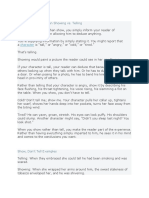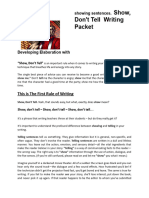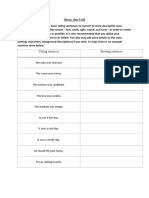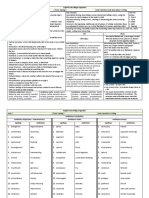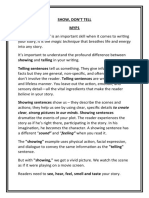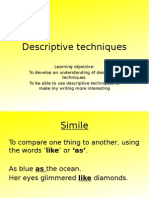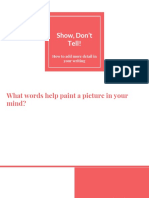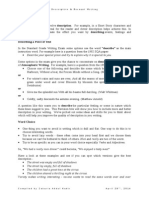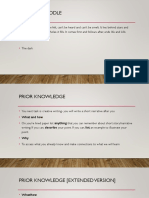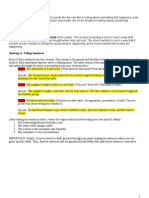0% found this document useful (0 votes)
44 views4 pagesShow Not Tell in Writing.
The document discusses the writing technique of showing versus telling. It explains that showing allows readers to experience a story through sensory details rather than being directly told what is happening. It then provides examples of how to use sensory details, action verbs, dialogue and more to show rather than tell in writing.
Uploaded by
verystrongethanCopyright
© © All Rights Reserved
We take content rights seriously. If you suspect this is your content, claim it here.
Available Formats
Download as PDF, TXT or read online on Scribd
0% found this document useful (0 votes)
44 views4 pagesShow Not Tell in Writing.
The document discusses the writing technique of showing versus telling. It explains that showing allows readers to experience a story through sensory details rather than being directly told what is happening. It then provides examples of how to use sensory details, action verbs, dialogue and more to show rather than tell in writing.
Uploaded by
verystrongethanCopyright
© © All Rights Reserved
We take content rights seriously. If you suspect this is your content, claim it here.
Available Formats
Download as PDF, TXT or read online on Scribd
/ 4



